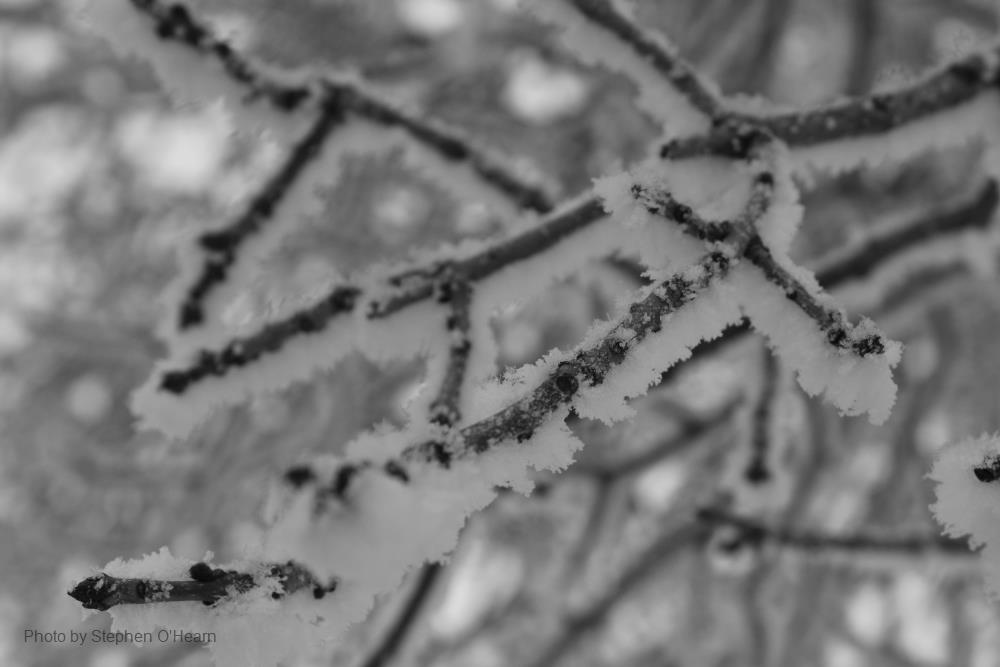
Related items loading ...
Section 1: Overview
Name of Research Project
|
Related Project
|
Part
|
|
GWF-HPFS: Hydrological Processes in Frozen Soils
|
|
|
|
|
|
|
|
Program Affiliations
Related Research Project(s)
|
GWF-HPFS: Hydrological Processes in Frozen Soils | |
Dataset Title
Data examining the comparative effect of salt and soil pores on the freezing characteristic curve of laboratory and field soils
Additional Information
Creators and Contributors
|
Seth Amankwah | Author, Point of Contact | seth.amankwah@usask.ca | University of Saskatchewan |
Andrew Ireson | Author, Point of Contact | andrew.ireson@usask.ca | University of Saskatchewan |
Charles Maule | Author | | University of Saskatchewan |
Rosa Brannen | Author | | University of Saskatchewan |
Simon Mathias | Author | | Durham University |
Abstract
The data sets were used in studying the role of salt and soil pore on the freezing characteristic curve of frozen soils. In the laboratory, the soil moisture characteristic curve (SMC) of a silica sand was measured using a Hydraulic Property Analyzer (HYPROP). The soil freezing characteristic curve (SFC) of the same sand was measured using a series of column experiments with controlled total water content and pore-water salinity. In the field, data were collected from the St Denis National Wildlife Area (SDN), a mixed grassland cropped site in the Canadian prairies in Saskatchewan and the Boreal Ecosystem Research and Monitoring Sites (BERMS) Old Jack Pine (OJP) site in Saskatchewan, Canada. The data were used to validate the performance of three alternative SFC models (capillary, salt exclusion, and the combined capillary salt models).
Purpose
This dataset supports the Global Water Futures project Hydrological Processes in Frozen Soils, which aims to improve understanding of soil freeze-thaw processes and methods of interpreting soil moisture data from instrumentation in frozen soils.
Plain Language Summary
Keywords
|
salt |
soil pore |
freezing characteristic curve |
silica sand |
Citations
Amankwah, S., Ireson, A., Maule, C., Brannen, R., Mathias, S. (2021). Data examining the comparative effect of salt and soil pores on the freezing characteristic curve of laboratory and field soils [Dataset]. Federated Research Data Repository.
https://doi.org/10.20383/102.0391
Section 3: Status and Provenance
Dataset Version
1
Dataset Creation Date
2021-05-14
Status of data collection/production
Dataset Completion or Abandonment Date
2021-05-14
Data Update Frequency
Creation Software
Primary Source of Data
Other Source of Data (if applicable)
Data Lineage (if applicable). Please include versions (e.g., input and forcing data, models, and coupling modules; instrument measurements; surveys; sample collections; etc.)
1. Description of methods used for collection/generation of data: The soil moisture characteristic curve (SMC) of a silica sand was measured with a Hydraulic Property Analyzer (HYPROP) in the laboratory. The soil freezing characteristic curve (SFC) (volumetric moisture content and temperature pairs) of the same sand was measured using a series of soil column freezer experiments with controlled total water content and pore-water salinity using the Stevens HydraProbe sensor. In the field, data were collected from the St Denis National Wildlife Area (SDN), a mixed grassland cropped site in the Canadian prairies in Saskatchewan and the Boreal Ecosystem Research and Monitoring Sites (BERMS) Old Jack Pine (OJP) site in Saskatchewan, Canada. At the SDN site, soil moisture content and temperature were measured with the Stevens HydraProbe sensor to quantify the SFC and the matric potential needed for the field SMCs was measured using the Campbell Scientific 229 heat dissipation matric water potential sensor. For the OJP site, the SFC was measured with the Stevens HydraProbe and the SMC was obtained from Cuenca et al. (1997). A detailed description of the methodology can be found in Amankwah, et al. (2021).
Amankwah, S. K., Ireson, A. M., Maule, C., Brannen, R., Mathias, S. A. (2021). Quantifying the soil freezing characteristic: the dominant role of salt exclusion. Under consideration for Water Resources Research.
https://www.essoar.org/doi/abs/10.1002/essoar.10506652.1Cuenca, R. H., Stangel, D. E., & Kelly, S. F. (1997). Soil water balance in a boreal forest. Journal of Geophysical Research: Atmospheres, 102(D24), 29355-29365.
https://doi.org/10.1029/97JD023122. Methods for processing the data: The data were saved as csv files and imported into python for analysis
3. Describe any quality-assurance procedures performed on the data: The data was plotted and crossed checked by Dr. Andrew Ireson for possible errors before submission.
4. People involved with sample collection, processing, analysis and/or submission: The laboratory data were collected by myself. Uri Nachshon and Xicai Pan were responsible for the installation of the SDN field instrumentation back in 2013, and Bruce Johnson and all the technicians at the GIWS were responsible for collecting and organizing the data sets for the SDN and OJP field sites.
Section 4: Access and Downloads
Access to the Dataset
Terms of Use
Does the data have access restrictions?
Downloading and Characteristics of the Dataset
Download Links and Instructions
Total Size of all Dataset Files (GB)
0.017
File formats and online databases
Other Data Formats (if applicable)
List of Parameters and Variables
|
soil moisture (volumetric) | cm3/cm3 | 30 min | |
soil temperature | C | 30 min | |
soil matric potential | m | 30 min | |


 GWFNet
GWFNet Master
Master Data
Data Research
Research Map
Map
 Advanced
Advanced Tools
Tools
 . . .
. . .
 Metadata Editor
Metadata Editor
 Record List
Record List
 Alias List Editor
Alias List Editor
 Legacy sites
Legacy sites